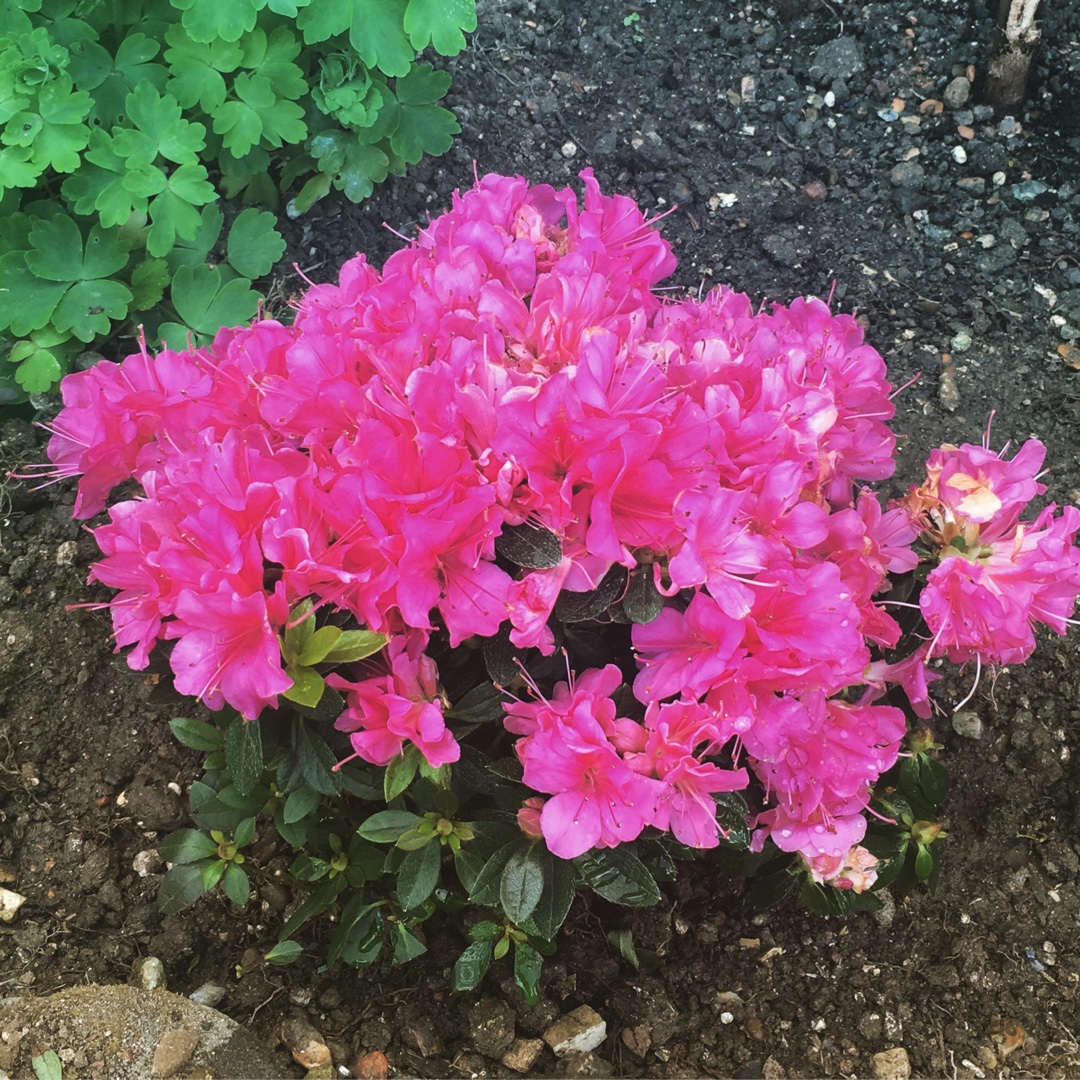
Rhododendron Japonica 'Pink Panther'
Azalea 'Pink Panther'
Rhododendron is a genus of more than 1,000 species and include azaleas. These plants tend to be grown for their magnificent flowers that come into full bloom in spring time. They definitely prefer acidic soils so make sure you adjust the soil accordingly. Deciduous azaleas are the only rhododendrons that do not have scaly leaves. Evergreen azaleas are not true evergreens; the leaves that are formed in spring on the lower parts of the shoots fall in autumn. Azalea 'Pink Panther' is a compact evergreen azalea with lots of Barbie-pink trumpet-shaped flowers from early Spring
Contributed by @katesmck
-
Partial shade
-
Occasional watering
-
Frost Hardy: 23F (-5°C)
-
Moist and free draining
Common name
Azalea 'Pink Panther'
Latin name
Rhododendron Japonica 'Pink Panther'
type
Trees or Shrubs
family
Ericaceae
ph
4.5 - 6.0 Acid - Neutral
Plant & bloom calendar
-
Best time to plant
-
When the plant will bloom
full grown dimensions
 1.00 M
1.00 M
1.00 M
1.00 M
Rhododendron Japonica 'Pink Panther'
Rhododendron is a genus of more than 1,000 species and include azaleas. These plants tend to be grown for their magnificent flowers that come into full bloom in spring time. They definitely prefer acidic soils so make sure you adjust the soil accordingly. Deciduous azaleas are the only rhododendrons that do not have scaly leaves. Evergreen azaleas are not true evergreens; the leaves that are formed in spring on the lower parts of the shoots fall in autumn. Azalea 'Pink Panther' is a compact evergreen azalea with lots of Barbie-pink trumpet-shaped flowers from early Spring
Flowering
From Late Winter TO Mid Summer
Various gorgeous flowers from late winter. Some varieties bloom later through the year.
Planting
From Late Summer TO Late Autumn
Best planted towards the very end of summer and autumn. If the soil is not acidic dig in plenty composted leaves or bark. Ericaceous compost is acidic. They do best in sheltered, semi-shaded positions but many species with small scaly leaves will thrive in full sun provided they do not dry out. Larger leaved varieties require more shade and shelter from wind.
Propagation by cuttings
From Late Summer TO Mid Autumn
Semi hard wood cuttings are taken from the current years growth from late summer to mid autumn the bottom of the cuttings is hard and soft on the top. With a sharp knife take a cutting of about 14 cms, remove lowest leaves, dip end into rooting hormone, and place round the edge of a pot filled with a suitable compost, water well, they must remain moist till rooted, place under glass but in semi shade.










